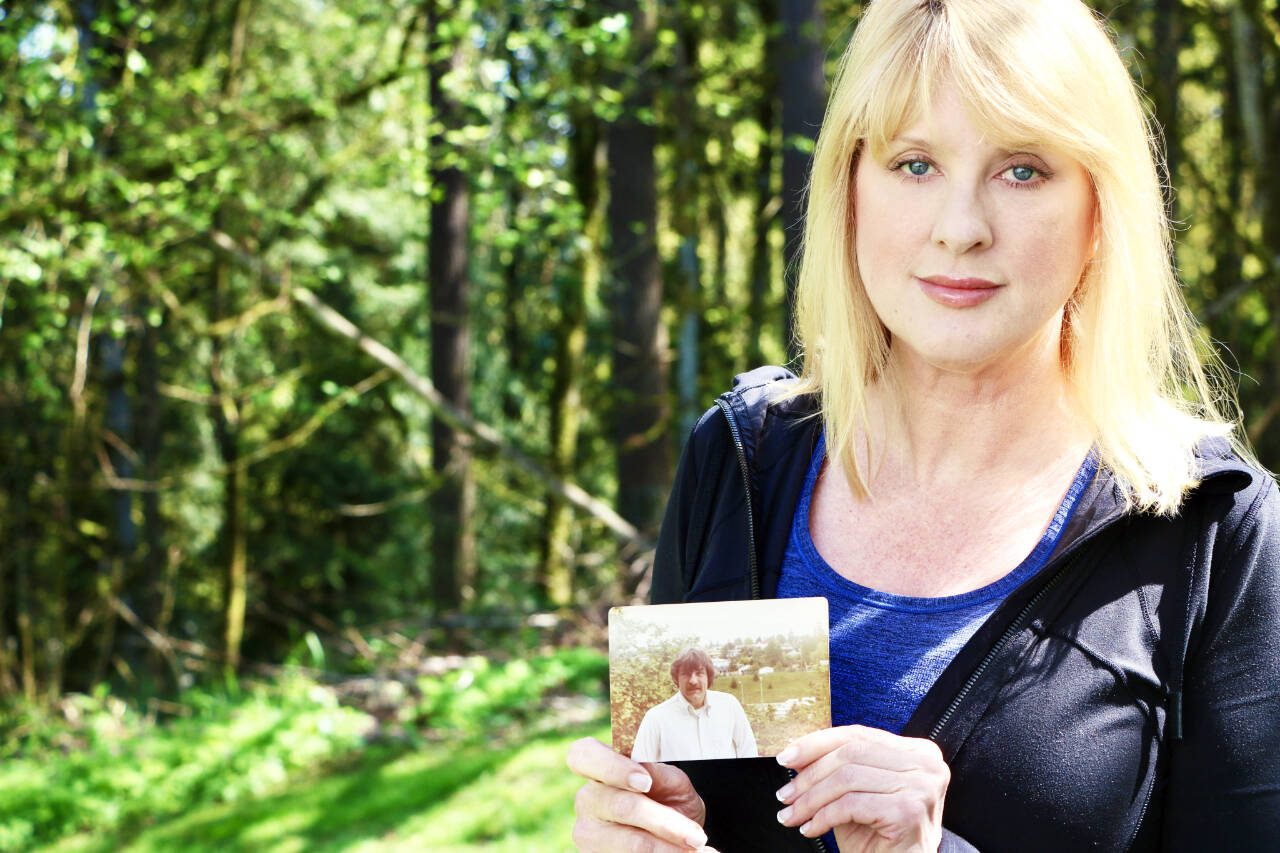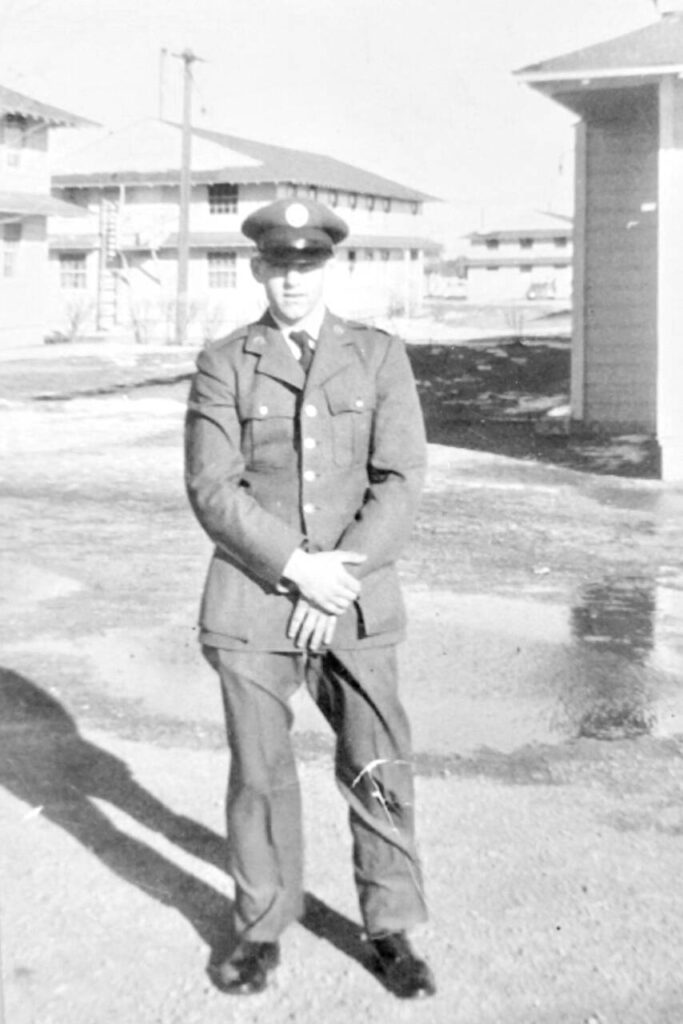EVERETT — As children and adults, Tom Stepp and Delanya Savage searched for their father in prison registries, libraries and phone books — dialing strangers, sending postcards, hoping for any kind of reply.
They never got one. Not until much later did they learn why.
David DeDesrochers, who often went by David “Stepp,” was murdered in 1982. His body was found in a wooded area near Gold Bar, riddled with bullets, dumped near an abandoned mine. His homicide was never solved.
Now, more than four decades later, his family — who only recently found each other through DNA tests — is still searching for answers. They say the pain of his unsolved murder lingers and believe his criminal past may have made it easier for authorities to shelve his case.
“Everybody deserves justice, right?” said Stepp, now 67. “Any answer is better than none.”
Stepp was 5 years old when his father left. He remembers visiting him in prison after a gas station robbery, and fishing together once, but little else. For most of his life, his father’s fate was a mystery.
“I’ve always wondered about him,” Stepp said. “Wanted to see him and meet him.”
In the early 1990s, a chance meeting with a private investigator revealed the truth. Stepp obtained a death certificate and newspaper clippings, detailing the discovery of an unidentified body in the woods — tattoos and all — and later, a cold case reexamination.
His half-sister, Delanya Savage, didn’t find out until she was 27. She grew up banned from contacting her father. But when she turned 18, she began looking for him — sending postcards, flipping through library phone books for names that matched.
When she finally learned the truth, it wasn’t just his death that stunned her — it was the violence. The coroner’s report listed multiple gunshot wounds: one to the chest, one through the neck and a final shot to the head.
“Wherever he was shot, there was going to be a lot of blood,” Savage said. “It had to have been moved in a truck or a van. I don’t understand why that couldn’t have been traced.”
Cold, but not closed
The Snohomish County Sheriff’s Office confirmed the case is still open — but not actively investigated.
“There was quite a bit of initial investigation in 1982 and 1983,” said Lt. David Bowman in an email, who oversees the Major Crimes Unit. “ … We still consider it an open homicide case, but don’t have the resources or solvability factors to assign it for active investigation.”
In the decades since, detectives reviewed the case in 1993, 2008 and again in 2011. Two potential suspects were identified early on. One drowned in 1983. The other was never definitively linked to the crime and neither has been ruled out, Bowman said.
DeDesrochers was believed to have been shot elsewhere and left in the snow in the woods months before he was discovered, Bowman said. Investigators found no trace of a crime scene — no tire tracks, footprints or witnesses.
Still, Bowman said the victim’s criminal history — which included robberies and violence — didn’t influence how the case was handled.
“A strong philosophy passed down to our detectives … the lifestyle of a victim doesn’t matter,” Bowman wrote. “They are a victim of homicide and equal in that sense.”
Savage and her newly found cousin, Wendy Banchero, aren’t convinced.
“It feels like I’m getting the brush-off,” Banchero said. “I get it — he was a criminal. But he was still a person. He had four kids.”
‘He matters to us’
Banchero was 13 when her uncle was killed. She remembers whispers about him — “a violent man,” “a heroin addict,” “bad news.”
“But when I met him, I didn’t see that,” she said. “I only saw my uncle David.”
She connected with cousins through ancestry DNA in the last couple years. They shared stories and questions. In the coming months, the family plans to travel to Gold Bar and plant a cross where his body was found.
“We’re just trying to make it honorable somehow,” Banchero said. “ … Whatever he did wrong in life, we’re still here. And he matters to us.”
Snohomish County currently has about 110 unresolved cases — roughly half homicides, the rest missing persons or unidentified remains, Bowman said. Just two detectives are assigned to about four to six cold cases, both recently appointed and still finishing other duties. The major crimes unit is short-staffed, Bowman said.
“For the 2025-2026 biennium, we prioritized additional staffing to work both unresolved and contemporaneous cases, ” Bowman said. “Unfortunately, the county budget did not allow for any staffing increase.”
He emphasized the department’s commitment to victims, but acknowledged hard trade-offs in a system stretched thin. New cases take priority, often pushing older ones aside.
“Unresolved cases are never on the chopping block,” Bowman said in an email. “We must face the difficult decision to prioritize cases with known suspects to ensure they are able to be brought to justice during trial within a legal timeframe … We have more cases to work, but no detectives to do that work.”
As for the family’s frustration, Bowman said he’d welcome the chance to speak with them directly — and to learn more about DeDesrochers as a person, not just a case file.
As they prepare to visit the site where DeDesrochers’ body was found, they hold on to the little they do know — that he lived, he mattered and he left behind people who still care.
“We deserve to have some kind of closure,” Banchero said.
For Savage and Stepp, the search hasn’t ended.
“I think just finding out what happened to him was enough closure for me,” Savage said. “But I still go down rabbit holes sometimes.”
They are often looking for more — more stories, more photos, more truth.
“He was a human being, you know? No matter what he was or what he did, it deserves to be solved” Stepp said.
Aspen Anderson: 425-339-3192; aspen.anderson@heraldnet.com; X: @aspenwanderson.
Talk to us
> Give us your news tips.
> Send us a letter to the editor.
> More Herald contact information.




























